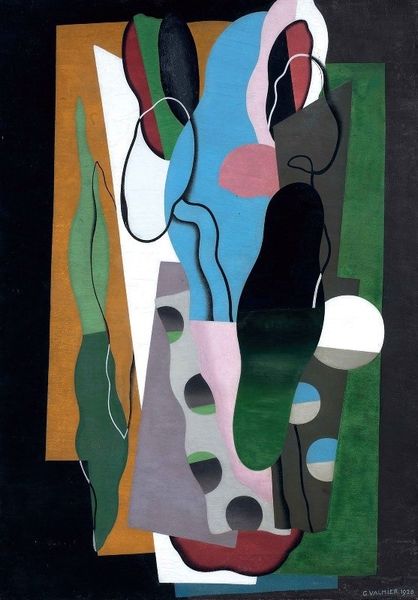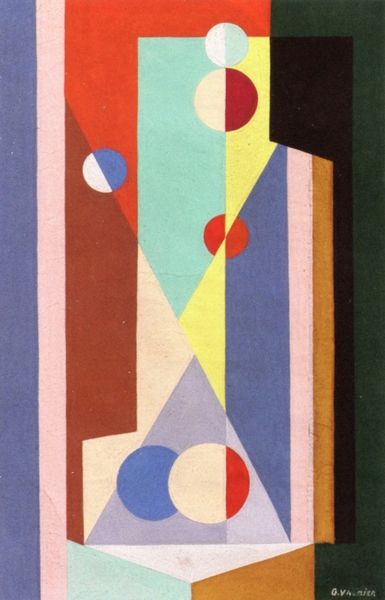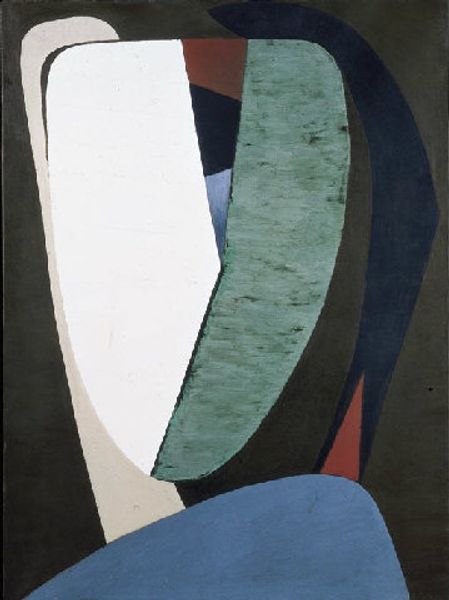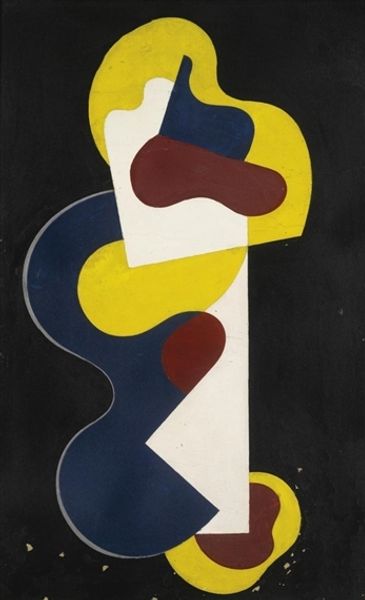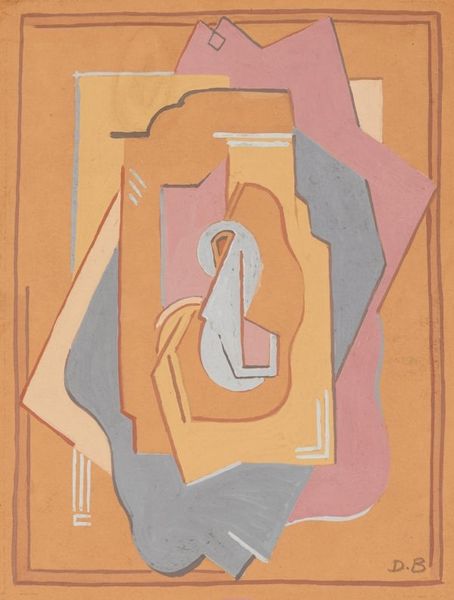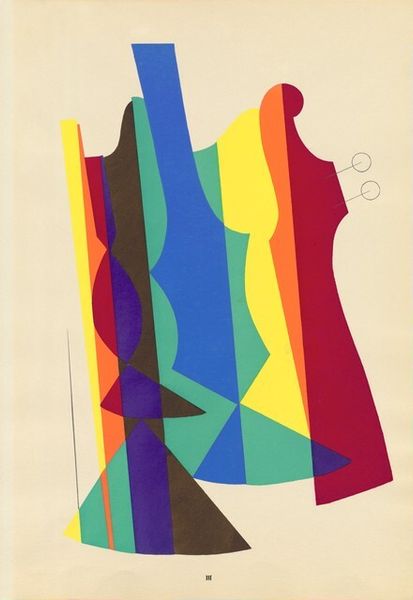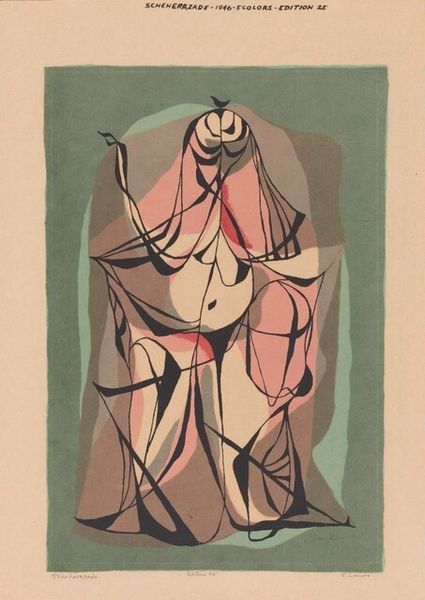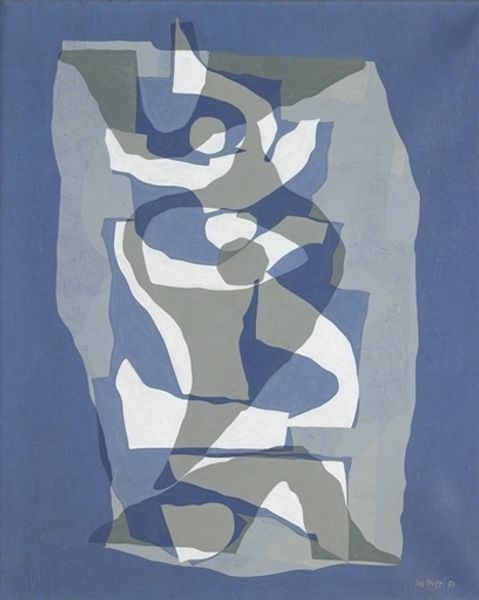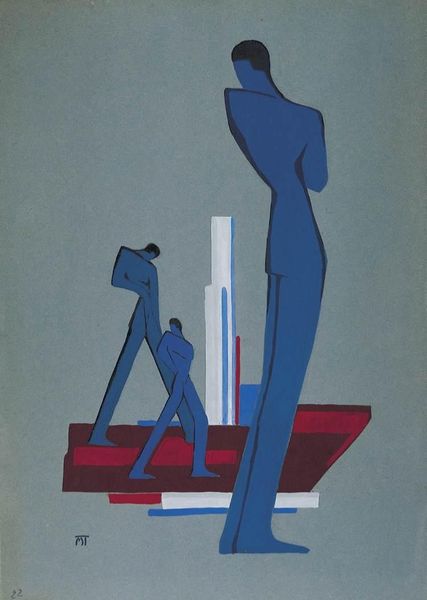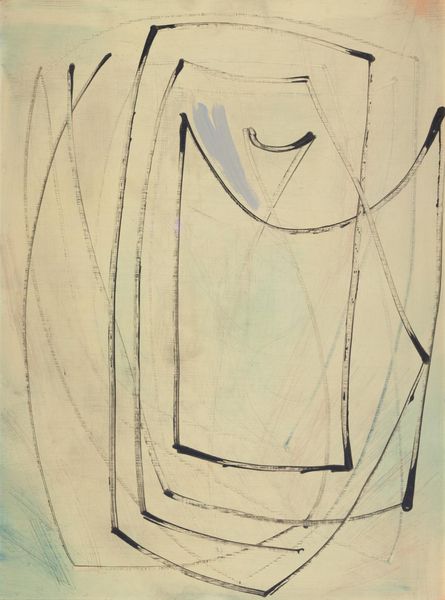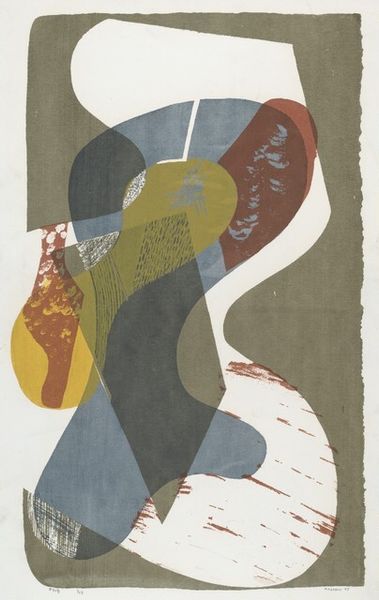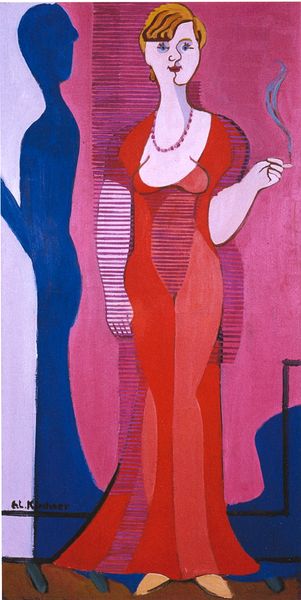
painting, oil-paint
#
portrait
#
painting
#
oil-paint
#
painted
#
figuration
#
mural art
#
geometric
#
expressionism
Copyright: Janos Mattis-Teutsch,Fair Use
Editor: This is "The Manual Workers and the Intellectuals," painted by János Mattis-Teutsch in 1927, using oil paints. I’m really struck by how geometric and almost architectural it feels. What do you make of the composition? Curator: Formally, the painting is rigidly structured by the juxtaposition of color and line. Note how Mattis-Teutsch uses a vertical division to separate distinct yet mirrored figures or forms. These simplified figures lack individualising details, thereby emphasising abstract representation. How do you interpret this abstraction in terms of meaning? Editor: I guess the artist wants to convey types, or even ideas, rather than actual people. The simplification lends itself to that, I think. Does the color scheme hold significance? Curator: Indeed. The restricted palette - predominantly blues, reds and greens – creates visual harmony, whilst simultaneously emphasising the contrast between the forms. Consider the tension between the rigid blues and the warmer, organic pinks. Does that not create a sense of division? Editor: Absolutely, the blues on the sides are so solid, while the figures in the center look like they are reaching or maybe communicating with each other using those lively, organic colours. Is this dynamic composition representative of anything in particular? Curator: It’s plausible to interpret the painting as an abstract exploration of the relationship between labor and intellect. Observe how the composition mirrors itself while remaining distinct – does that say something about unity through opposition? Mattis-Teutsch's structural and stylistic choices offer insight into his philosophical contemplations. Editor: That’s fascinating, seeing how the pure formal qualities can carry so much meaning about potentially contrasting social roles, but using abstraction in a way to discuss unity. Curator: Precisely. Formal analysis enables a deeper understanding of Mattis-Teutsch's philosophical investigations within this artwork.
Comments
No comments
Be the first to comment and join the conversation on the ultimate creative platform.
